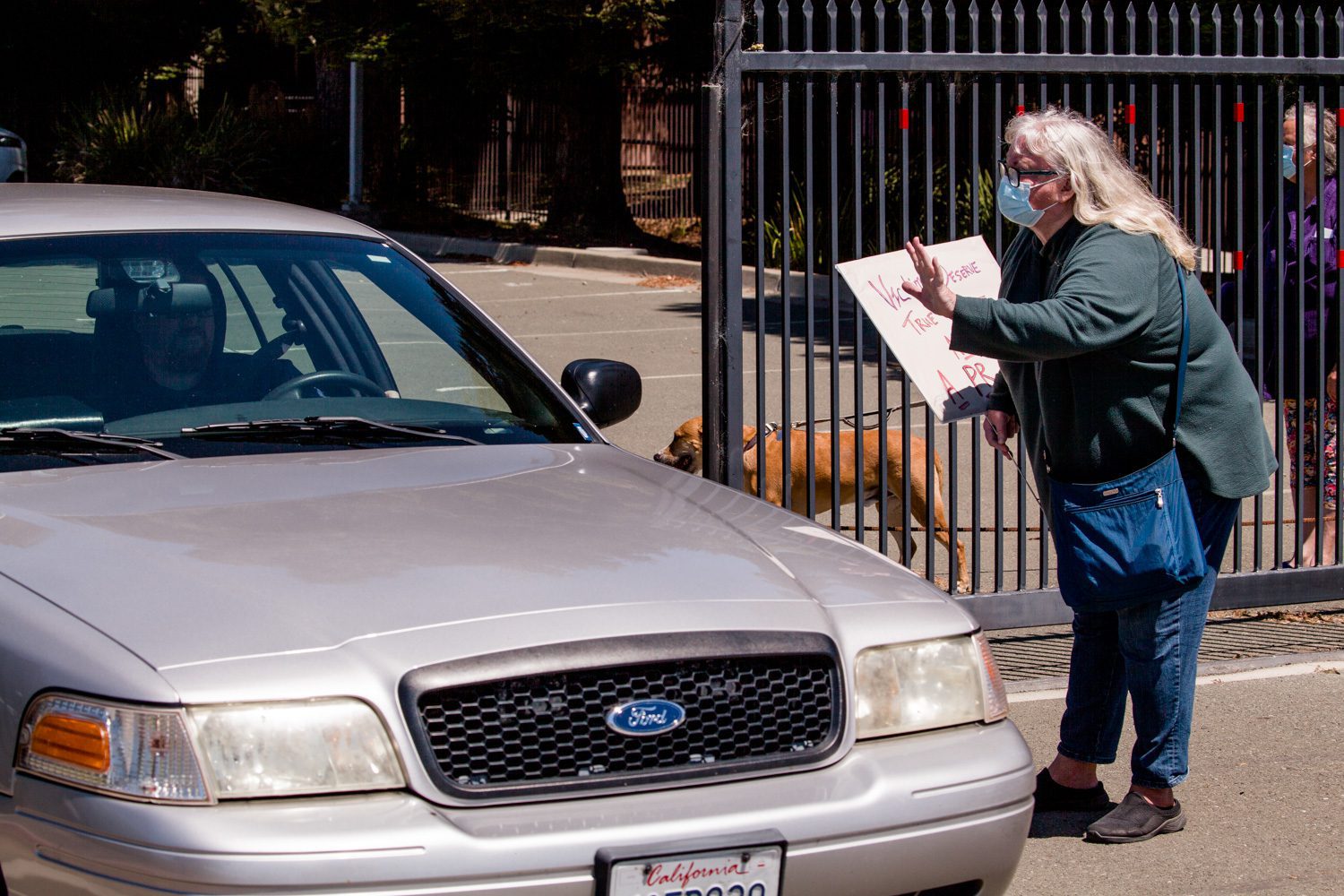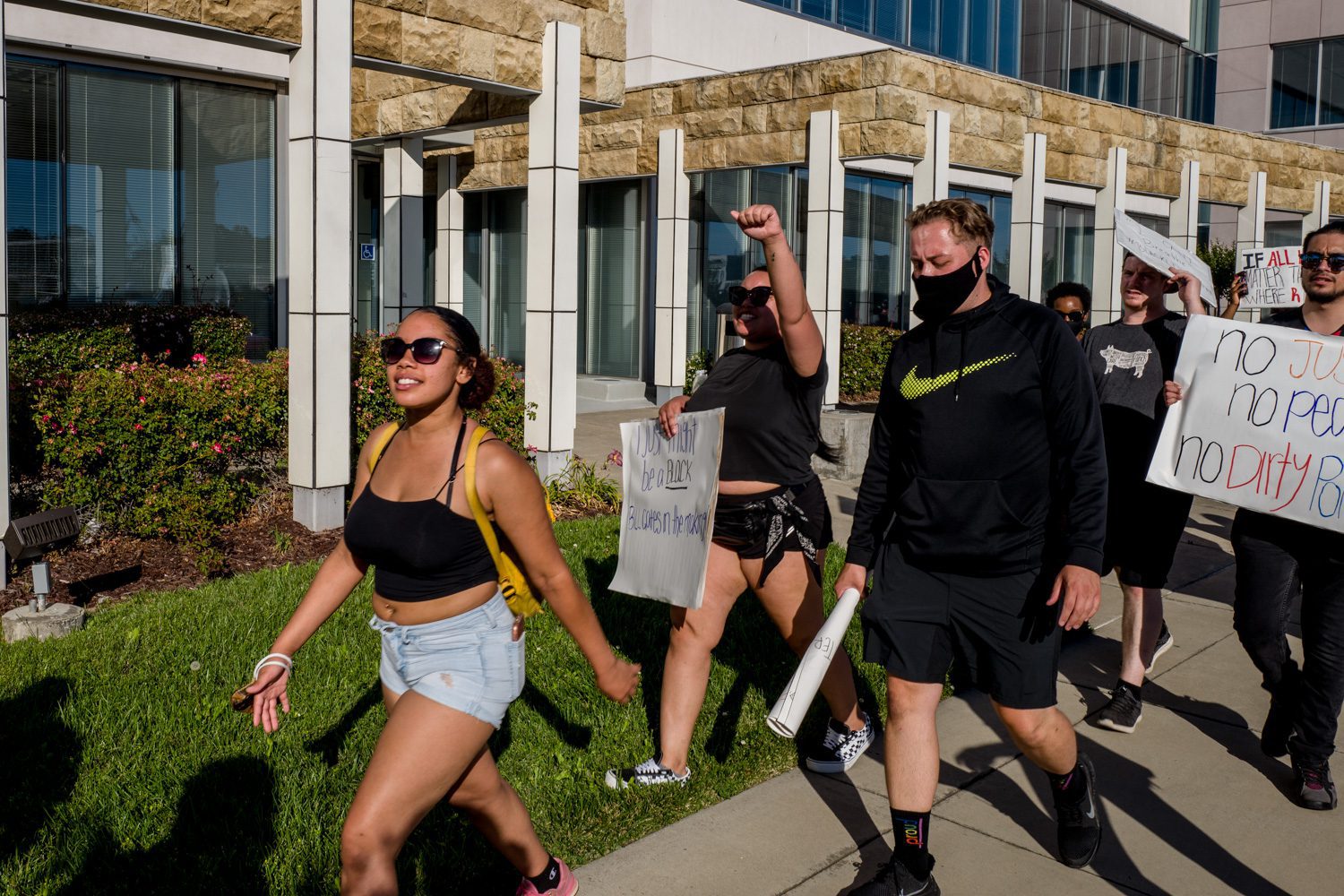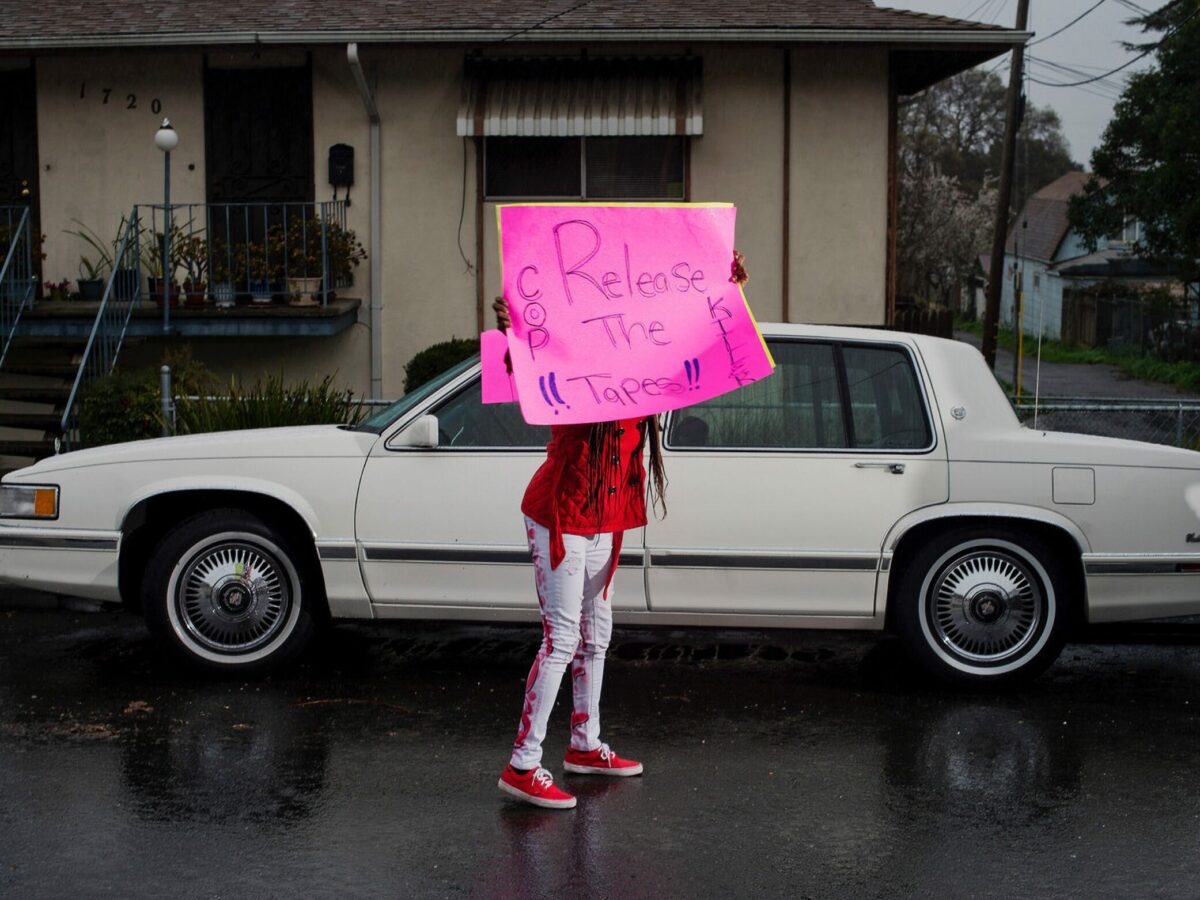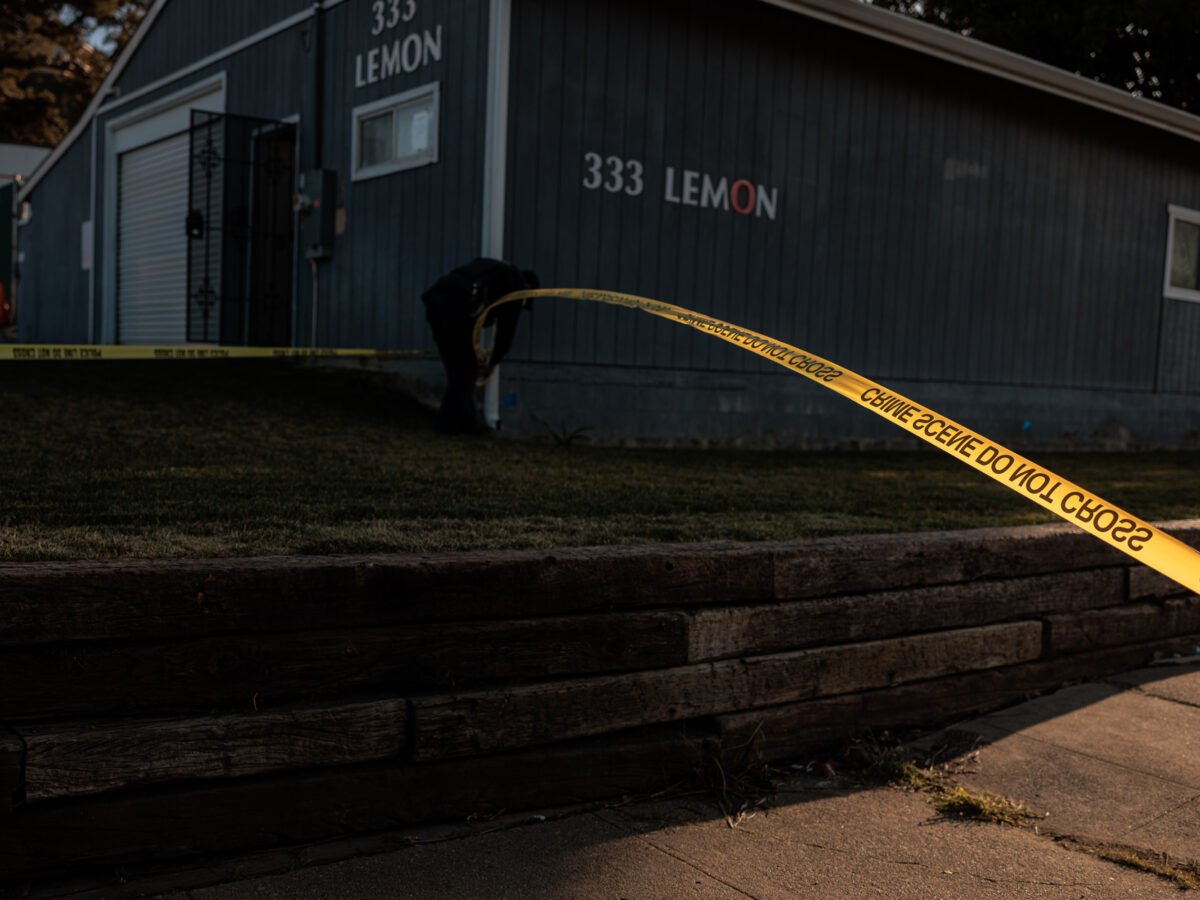
We agree that Vallejo police need better facilities and deserve safe working conditions, but a waterfront headquarters at 400 Mare Island Way is not the answer. Yet tonight, the Vallejo City Council appears poised to double down by voting to borrow $30 million for this irresponsible project.
If approved, this will jeopardize the city’s fiscal stability, undermine economic development and public safety, and bypass the community’s will.
We cannot afford this mistake
Vallejo’s finances are precarious. The City already spent $13.45 million on the purchase of 400 Mare Island Way, committing millions in reserves and diverting funds from capital improvement projects, public works, and maintenance of the current police building at 111 Amador Street. We then spent $992,000 more on a feasibility study and architectural design.
The city’s proposition for a $30 million loan, first revealed by Open Vallejo, will cost an estimated $1.6 million annually for 30 years. A planned hiring freeze to pay for the building will cover just a fraction of the cost. And the project is still in its first phase, with the cost estimate based on a retrofit design that is only 35% complete.
The public still does not know the total cost of the project. Staff estimates have varied wildly. The feasibility study, which should have been completed before the city committed to the purchase, was completed two months after. The most recent staff report claims the city conducted “considerable analysis” of alternative locations in 2018, but to date, that information has not been provided to the public. Even elected officials have been kept in the dark: councilmembers Loera-Diaz, Arriola, Meissner, and Mayor McConnell requested more information in March 2021, but it was never provided.
And the information currently available on the project is unreliable and incomplete.
It is impossible to assess the viability of a project if we do not know the actual costs and have not evaluated alternative locations or comparable buildings in other cities.
The staff reports thus far disclosed include many inconsistencies. In 2019 the city projected that the purchase would cost $20 million. If the council approves this $30 million loan, the budget will exceed that in just the first phase. Although the most recent staff report claims the loan will not impact reserves, the resolution being proposed by staff authorizes the City Manager to use general fund revenues to repay the loan.
The City’s numbers keep changing, as well. The Feb. 22 staff report listed a 20-year loan term, while the March 8 report claimed it would take 30 years to repay. The March report estimated cost increases at 6% for 400 Mare Island Way while applying inflation estimates of 15–30% at alternate sites, downplaying the project’s true costs. And the report lists square footage needs for the police headquarters as 60,000 on one page and 75,000 to 100,000 on another.
The wrong location
Vallejo’s waterfront is a valuable resource. It is a favorite gathering place for families, festivals, and community events. A police station would present an eyesore and generate noise and traffic that would undermine recreation and economic development.
Moving the Vallejo Police Department to 400 Mare Island Way also defies the city’s General Plan 2040, developed through a multi-year process that included extensive community input. Adopted by the Vallejo City Council in August 2017, the plan identified 400 Mare Island Way as an economic engine for other waterfront activities. The plan also noted that a new police station should be centrally located and near thoroughfares or the freeway.
Other uses for the building would provide public benefit, advance economic development, bring in rental income, and avoid a costly retrofit that would only be necessary for police use.

Geoffrey King / Open Vallejo
The sun sets on the waterfront in Vallejo, Calif. on March 1, 2022. Credit: Geoffrey King / Open VallejoThe planned headquarters will also place pedestrians at risk and increase drive time for Vallejo patrol cars. A city needs assessment based on broadly-accepted guidelines found that a new police headquarters should be centrally located, with efficient access and travel routes for vehicles. But the waterfront is filled with pedestrians. They include tourists, festival-goers, dog-walkers and daily commuters, including more than one million ferry riders each year. A 2019 report commissioned by the city estimated that the new headquarters would “increase vehicle traffic in the project vicinity” by 1,900 daily trips, increasing traffic on Mare Island Way by 13%. The report concluded the site fell below the threshold for mandatory environmental review.
That same report identifies environmental issues the city has failed to address. The site is in a flood zone, and the land is prone to liquefaction. An earthquake or other disaster could cripple the city’s emergency response when needed most.The building and grounds are too small for Vallejo’s projected needs, with the 55,000 square feet of office space falling well short of the department’s most conservative estimates. In addition, the office building will require substantial modifications to be suitable for police operations. Initial renderings depict a ballistic wall that will face the waterfront, and the 2019 feasibility study recommended the installation of a high-security fence around the perimeter.
We will end up worse off than we started: owing $1.6 million per year on a 30 million dollar loan, in ownership of a waterfront building unsuitable for lease and subject to sea-level rise, and still in need of space for the police.
Rewarding misconduct
Public confidence in Vallejo police is dangerously low, and giving them a prime waterfront office building rewards misconduct and further erodes community trust. Vallejoans want to see tangible progress on promised reforms before committing tens of millions of tax dollars to a new police headquarters.

Geoffrey King / Open Vallejo
Vallejo resident Anne Carr attempts to speak with Vallejo detectives at a protest at 400 Mare Island Way in Vallejo, Calif. on May 24, 2021. Credit: Geoffrey King / Open VallejoVallejo police continue to assert that a police presence on the waterfront would make the community feel safer, but this fails to reflect the reality of the department’s reputation as one of the most violent and deadly police forces in the country. Many Vallejoans, particularly impacted families and people of color, feel less safe in the presence of our police. The city announced the department’s plans to relocate just three days after police killed Willie McCoy. Giving Vallejo police prime real estate on the waterfront is a power play that further traumatizes those most impacted and minimizes real concerns about the brutality and integrity of the department.
The city proposes a hiring freeze that will redirect funds from other parts of the police budget and the city’s general fund to pay for the building. But this will divert resources that could otherwise go to implementing reforms, violence reduction programs, or initiatives to address crime. One of the core arguments for the new building is police morale, but improving morale requires addressing a toxic culture that fails to hold officers accountable for wrongdoing.
The community has spoken

Geoffrey King / Open Vallejo
Protesters march past the police station at 400 Mare Island Way in Vallejo, Calif. hours after a police detective killed 22-year-old Sean Monterrosa on June 2, 2020. Credit: Geoffrey King / Open VallejoThe city has made no serious effort to solicit public input on this project. But Vallejo voters spoke decisively in November 2020 when we rejected Measure G, an initiative likely to have been used on funding the station. Mayor McConnell, who opposes the project, was elected with a citywide mandate. Councilmembers Arriola and Loera-Diaz, who oppose the station, received a majority of votes in their districts.
The community also made our feelings clear at the disastrous CARE Center ribbon-cutting last May. After promising to halt activities at 400 Mare Island Way in March 2021, Vallejo police moved into the building anyway, in defiance of the City Council. Even after the department made misleading statements apparently designed to thwart a planned protest, more than a hundred community members showed up on short notice to make their voices heard.
The Vallejo City Council is at a crossroads. Councilmembers have the opportunity to show authentic leadership, embrace community engagement, and build a foundation for modern, constitutional policing. We urge them to listen.
Op-eds are contributed by people from outside this news organization. They represent the views of the author.




